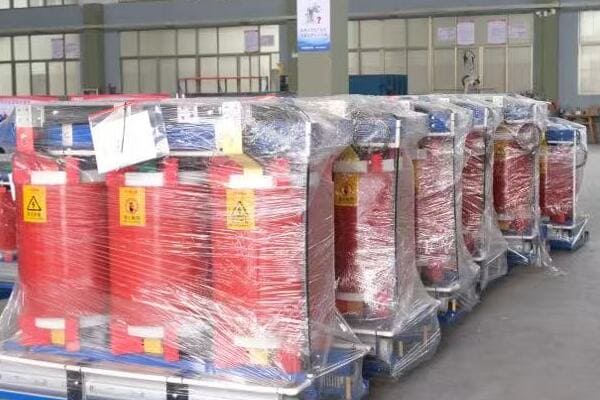11kV Dry Type Transformer Specifications Explained: Voltage, Insulation Class, and Cooling Method?
Are you struggling to understand the complex specifications of 11kV dry type transformers? You’re not alone. Many engineers and project managers find themselves overwhelmed by the technical jargon and myriad of parameters. But what if you had a clear, comprehensive guide to help you navigate these specifications with confidence?
11kV dry type transformers are widely used in industrial and utility settings. Key specifications include voltage rating, insulation class (e.g., F or H), and cooling method (AN/AF). Understanding these parameters ensures proper transformer selection, compliance with standards, and reliable performance in demanding environments. These specifications directly impact the transformer’s efficiency, lifespan, and suitability for specific applications.
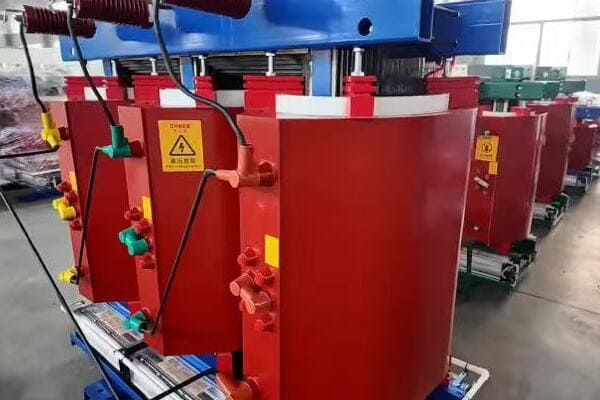
In this comprehensive guide, I’ll walk you through the essential specifications of 11kV dry type transformers. We’ll explore voltage classes, insulation types, cooling methods, and other crucial parameters. Whether you’re an experienced engineer or new to transformer selection, this article will provide valuable insights to help you make informed decisions for your power distribution projects.
Understanding the 11kV Voltage Class in Dry Type Transformers?
Have you ever wondered why 11kV is such a common voltage class for dry type transformers? Understanding this voltage class is crucial for proper transformer selection and application. But what exactly does 11kV mean in the context of dry type transformers, and where are they typically used?
The 11kV voltage class in dry type transformers refers to the primary (high voltage) side rating. These transformers are widely used in industrial facilities, hospitals, and commercial power distribution systems. They typically step down 11kV to lower voltages like 400V or 690V for end-use applications. The 11kV class offers a good balance between power capacity and distribution range for medium-voltage applications.
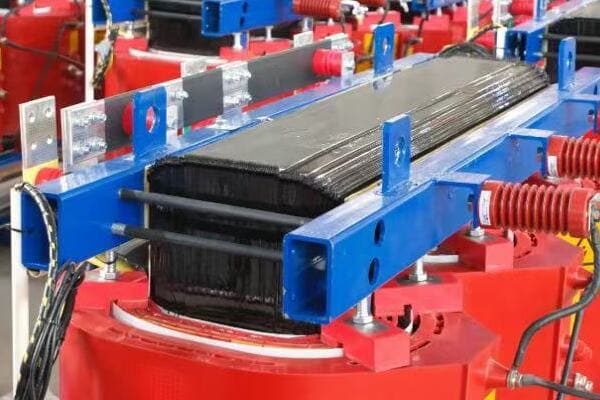
Exploring the 11kV Voltage Class
Let’s break down the key aspects:
- Definition and Significance
- Common Applications
- Typical Configurations
- Advantages of 11kV Class
- Comparison with Other Voltage Classes
Definition and Significance
The 11kV voltage class means:
- Primary (input) voltage rated at 11,000 volts
- Part of the medium voltage range in power distribution
- Commonly used as a standard distribution voltage in many countries
I recently worked on a project where understanding the 11kV class was crucial for integrating a new industrial facility into the local power grid.
Common Applications
11kV dry type transformers are frequently used in:
- Industrial plants and factories
- Commercial buildings and shopping centers
- Hospitals and healthcare facilities
- Educational institutions
- Urban power distribution networks
During a recent hospital renovation project, we installed several 11kV dry type transformers to ensure reliable power supply for critical medical equipment.
Typical Configurations
Common configurations include:
- Delta-Wye (Δ-Y) connection: Most common for stepping down to low voltage
- Delta-Delta (Δ-Δ) connection: Used in some industrial applications
- Wye-Wye (Y-Y) connection: Less common but used in specific scenarios
Here’s a quick overview of typical configurations:
| Configuration | Primary | Secondary | Common Use |
|---|---|---|---|
| Delta-Wye | 11kV | 400V/230V | General distribution |
| Delta-Delta | 11kV | 11kV | Industrial, phase shifting |
| Wye-Wye | 11kV | 400V/230V | Special applications |
Advantages of 11kV Class
The 11kV class offers several benefits:
- Efficient power transmission over medium distances
- Reduced current flow compared to lower voltages, minimizing losses
- Standardized equipment and components widely available
Comparison with Other Voltage Classes
How 11kV compares to other classes:
- Lower than 33kV or 66kV used in sub-transmission
- Higher than 415V or 690V used in low voltage applications
- Offers a good balance for local distribution networks
Key points about the 11kV voltage class:
- Standard medium voltage for distribution systems
- Widely used in industrial and commercial applications
- Offers efficient power transmission over medium distances
- Typically steps down to 400V or 690V for end-use
- Provides a good balance between capacity and distribution range
In my experience, the 11kV class is often the sweet spot for many medium-scale power distribution projects. I’ve seen cases where choosing 11kV over lower voltages significantly reduced transmission losses in large industrial complexes.
For instance, in a recent project for a sprawling manufacturing facility, we opted for 11kV distribution throughout the plant, with local step-down transformers near load centers. This approach minimized voltage drop issues and improved overall energy efficiency compared to a low-voltage distribution system.
As we move on to discuss insulation classes, keep in mind how the 11kV voltage rating interacts with insulation requirements. Understanding this relationship is crucial for ensuring the longevity and reliability of your transformer in various operating conditions.
Insulation Class: F, H, and Beyond?
Are you confused by the alphabet soup of insulation classes for dry type transformers? Understanding these classes is crucial for selecting a transformer that can withstand the thermal stresses of your application. But what do these letters mean, and how do they impact the performance and lifespan of your 11kV dry type transformer?
Insulation classes in dry type transformers, such as F and H, define the maximum operating temperature the insulation can withstand. Class F allows for a 155°C hot spot temperature, while Class H can handle up to 180°C. Higher classes offer better thermal stability but at increased cost. The choice of insulation class affects the transformer’s lifespan, overload capacity, and suitability for different environmental conditions.
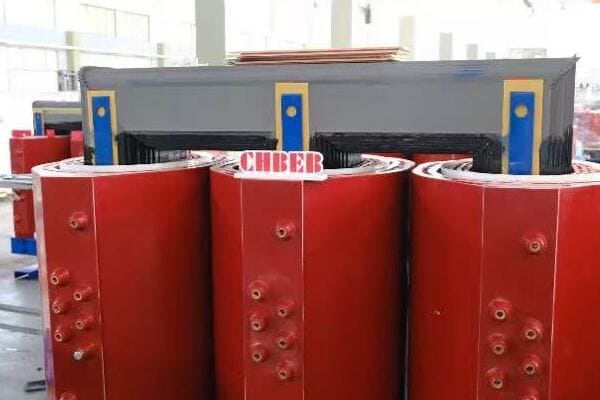
Understanding Insulation Classes
Let’s explore the key aspects of insulation classes:
- Definition and Standards
- Common Insulation Classes
- Temperature Limits and Thermal Stability
- Impact on Transformer Performance
- Choosing the Right Insulation Class
Definition and Standards
Insulation classes are defined by:
- IEC 60085 international standard
- ANSI/IEEE standards in North America
- Temperature limits for different materials
I recently attended a workshop where the importance of these standards in ensuring global compatibility was emphasized, especially for export-oriented projects.
Common Insulation Classes
The most frequently used classes are:
- Class F: Widely used in standard applications
- Class H: For higher temperature environments or overload conditions
- Class C: For extreme temperature applications (less common in dry type transformers)
During a recent industrial project, we opted for Class H insulation due to the high ambient temperatures and occasional overload requirements.
Temperature Limits and Thermal Stability
Each class has specific temperature limits:
- Class F: 155°C maximum hot spot temperature
- Class H: 180°C maximum hot spot temperature
- Class C: Over 180°C, typically up to 220°C
Here’s a comparison of insulation classes:
| Class | Max Hot Spot Temp | Average Winding Temp Rise | Typical Applications |
|---|---|---|---|
| F | 155°C | 115°C | Standard industrial |
| H | 180°C | 140°C | High ambient temp, overloads |
| C | >180°C | >140°C | Extreme environments |
Impact on Transformer Performance
Insulation class affects several aspects:
- Lifespan of the transformer
- Ability to handle overloads
- Cooling requirements
- Overall size and weight of the transformer
Choosing the Right Insulation Class
Factors to consider:
- Ambient temperature of the installation site
- Expected load profile and potential overloads
- Environmental conditions (humidity, pollution)
- Cost considerations (higher classes are generally more expensive)
Key points about insulation classes:
- Define the maximum temperature limits for transformer operation
- Directly impact the transformer’s lifespan and performance
- Higher classes offer better thermal stability but at increased cost
- Choice depends on environmental conditions and operational requirements
- Must comply with international standards like IEC 60085
In my experience, selecting the right insulation class is crucial for ensuring long-term reliability. I’ve seen cases where underestimating the thermal requirements led to premature transformer failure, causing significant downtime and replacement costs.
For example, in a recent project for a steel mill, we initially considered Class F insulation based on standard specifications. However, after analyzing the harsh operating environment and frequent overload requirements, we upgraded to Class H. This decision, while increasing the initial cost, significantly improved the transformer’s reliability and reduced long-term maintenance needs.
As we move on to discuss cooling methods, keep in mind how insulation classes interact with cooling requirements. The right combination of insulation and cooling is key to achieving optimal performance and longevity in your 11kV dry type transformer.
Cooling Methods: AN, AF, and Hybrid Systems?
Are you puzzled by the various cooling methods available for 11kV dry type transformers? Choosing the right cooling system is crucial for maintaining optimal performance and extending the transformer’s lifespan. But what do AN, AF, and hybrid systems mean, and how do they impact your transformer’s efficiency and reliability?
Cooling methods for 11kV dry type transformers include AN (Air Natural), AF (Air Forced), and hybrid systems. AN relies on natural air circulation, AF uses fans for enhanced cooling, while hybrid systems combine both. The choice affects the transformer’s capacity, efficiency, and ability to handle load fluctuations. AN is simpler and quieter, AF allows for higher capacities, and hybrid systems offer flexibility in varying load conditions.
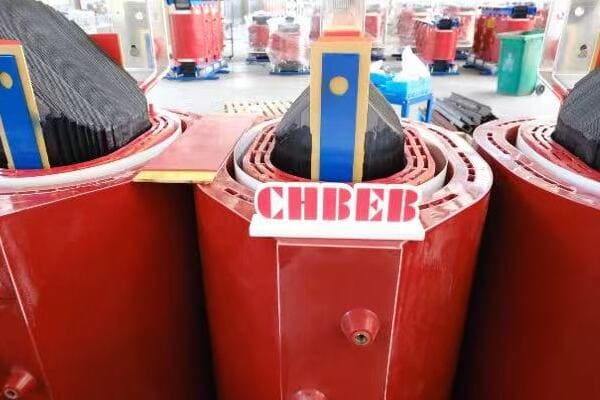
Exploring Cooling Methods
Let’s break down the main cooling techniques:
- Air Natural (AN) Cooling
- Air Forced (AF) Cooling
- Hybrid Cooling Systems
- Impact on Transformer Performance
- Selecting the Right Cooling Method
Air Natural (AN) Cooling
AN cooling relies on natural convection:
- No fans or external cooling devices
- Simplest and most common method for smaller transformers
- Quiet operation, ideal for noise-sensitive environments
I recently worked on a project where AN cooling was perfect for a quiet office environment, eliminating the need for noisy fans.
Air Forced (AF) Cooling
AF cooling uses fans to enhance air circulation:
- Allows for higher capacity or smaller transformer size
- More efficient cooling, especially under heavy loads
- Requires power for fan operation and maintenance
During a recent industrial installation, AF cooling allowed us to use a more compact transformer design, saving valuable floor space.
Hybrid Cooling Systems
Hybrid systems combine AN and AF methods:
- Operate in AN mode under normal conditions
- Switch to AF mode during peak loads or high temperatures
- Offer flexibility and energy efficiency
Here’s a comparison of cooling methods:
| Method | Capacity Range | Noise Level | Efficiency | Maintenance |
|---|---|---|---|---|
| AN | Low to Medium | Very Low | Good | Minimal |
| AF | Medium to High | Moderate | Excellent | Regular |
| Hybrid | Wide Range | Variable | Very Good | Moderate |
Impact on Transformer Performance
Cooling method affects several aspects:
- Maximum capacity and overload capability
- Temperature rise and hot spot management
- Energy efficiency and operating costs
- Transformer size and weight
Selecting the Right Cooling Method
Factors to consider:
- Load profile and peak demand
- Environmental conditions (ambient temperature, air quality)
- Space constraints and noise restrictions
- Maintenance capabilities and preferences
Key points about cooling methods:
- AN cooling is simple, quiet, but limited in capacity
- AF cooling offers higher capacity and efficiency but requires maintenance
- Hybrid systems provide flexibility for varying load conditions
- Cooling method directly impacts transformer size and performance
- Selection should balance efficiency, cost, and operational requirements
In my experience, choosing the right cooling method can significantly impact a transformer’s performance and longevity. I’ve seen cases where upgrading from AN to AF cooling allowed for a substantial increase in capacity without replacing the entire transformer.
For instance, in a recent data center project, we initially installed AN-cooled transformers. As the facility expanded and power demands increased, we retrofitted some units with AF systems. This upgrade allowed us to meet the growing power needs without replacing the transformers, saving considerable time and cost.
As we move on to discuss typical technical parameters for 11kV dry type transformers, keep in mind how cooling methods interact with other specifications. Understanding these relationships is key to selecting a transformer that meets your specific needs while ensuring optimal performance and reliability.
Typical Technical Parameters for 11kV Dry Type Transformers?
Are you finding it challenging to navigate the sea of technical parameters for 11kV dry type transformers? Understanding these specifications is crucial for selecting the right transformer for your project. But what are the key parameters you should focus on, and how do they impact the transformer’s performance and suitability for your application?
Key technical parameters for 11kV dry type transformers include rated capacity (typically 100kVA to 2500kVA), short-circuit impedance (usually 4-6%), no-load and load losses, and noise levels. Other important factors are vector group (often Dyn11), temperature rise, and efficiency ratings. These parameters determine the transformer’s performance, efficiency, and compatibility with your power system requirements.

Essential Technical Parameters
Let’s explore the critical specifications:
- Rated Capacity and Voltage
- Short-Circuit Impedance
- Losses and Efficiency
- Vector Group and Connection
- Temperature Rise and Noise Levels
Rated Capacity and Voltage
Key aspects of rating:
- Capacity range: Typically 100kVA to 2500kVA for 11kV class
- Primary voltage: 11kV (may have taps for voltage adjustment)
- Secondary voltage: Usually 400V or 690V
I recently worked on a project where selecting the right capacity was crucial. We chose a 1600kVA unit to handle the expected load growth over the next five years.
Short-Circuit Impedance
Important for system protection:
- Typically ranges from 4% to 6% for 11kV dry type transformers
- Affects fault current levels and system stability
- Higher impedance reduces fault currents but increases voltage drop
During a recent grid integration project, carefully matching the transformer’s impedance to the existing system was key to ensuring proper protection coordination.
Losses and Efficiency
Critical for operational costs:
- No-load losses: Typically 0.1% to 0.3% of rated capacity
- Load losses: Usually 1% to 2% at full load
- Efficiency: Modern units can exceed 98% at full load
Here’s a typical loss profile:
| Capacity | No-Load Loss | Load Loss (at 75°C) | Efficiency at Full Load |
|---|---|---|---|
| 1000kVA | 2100W | 9000W | 98.9% |
| 1600kVA | 2800W | 13000W | 99.0% |
| 2500kVA | 3800W | 18000W | 99.1% |
Vector Group and Connection
Common configurations:
- Dyn11: Most common for distribution transformers
- Other options: Dd0, Yyn0, depending on system requirements
Temperature Rise and Noise Levels
Environmental considerations:
- Temperature rise: Typically 80K (Class B) or 100K (Class F)
- Noise levels: Range from 60dB to 75dB, depending on capacity and cooling
Key points about technical parameters:
- Rated capacity and voltage define the transformer’s basic capabilities
- Short-circuit impedance is crucial for system protection and stability
- Losses and efficiency impact long-term operational costs
- Vector group determines compatibility with your power system
- Temperature rise and noise levels affect installation requirements
In my experience, carefully considering these parameters is essential for successful transformer integration. I’ve seen projects where overlooking a single parameter led to significant issues down the line.
For example, in a recent industrial expansion project, we initially selected a transformer based primarily on capacity. However, we later realized that the short-circuit impedance didn’t match well with the existing system protection scheme. This oversight led to protection coordination issues that required costly adjustments. It taught us the importance of considering all parameters holistically.
As we move on to compare different manufacturers, keep these technical parameters in mind. Understanding how various brands approach these specifications can provide valuable insights into their overall quality and suitability for your specific application.
Brand Comparison: Which Manufacturer Offers the Best Performance?
Are you finding it challenging to differentiate between various 11kV dry type transformer manufacturers? With so many options available, it can be overwhelming to determine which brand truly offers the best performance for your specific needs. But how do top manufacturers compare in terms of key specifications and real-world performance?
Leading manufacturers of 11kV dry type transformers include CHBEB, TBEA, SUNTEN, and Schneider Electric. CHBEB excels in temperature rise control, ideal for high-humidity areas. TBEA specializes in data center applications. SUNTEN performs well in high-load scenarios, particularly in South Asia. Schneider Electric focuses on energy efficiency for smart building systems. Each brand offers unique strengths, making the best choice dependent on specific project requirements.
Comparing Top Manufacturers
Let’s examine the strengths of leading brands:
- CHBEB (China Bei Er Bian Group)
- TBEA
- SUNTEN Electric
- Schneider Electric
- Performance Comparison in Key Areas
CHBEB (China Bei Er Bian Group)
Strengths:
- Superior temperature rise control, exceeding industry standards
- Ideal for high-humidity and tropical environments
- Strong customization capabilities for specific project needs
I recently worked on a project in Southeast Asia where CHBEB’s transformers performed exceptionally well in the challenging tropical climate, maintaining stable temperatures even under heavy loads.
TBEA
Key Features:
- Specializes in 11kV dry type transformers for data center applications
- Advanced cooling systems for high-density power environments
- Strong focus on energy efficiency and reliability
During a recent data center project, TBEA’s transformers demonstrated excellent performance in handling the variable loads typical of IT environments.
SUNTEN Electric
Notable Aspects:
- Excellent performance in high-load scenarios
- Popular choice in South Asian markets
- Known for robust design and reliability in demanding conditions
Here’s a quick comparison of these top brands:
| Brand | Key Strength | Best Suited For | Notable Feature |
|---|---|---|---|
| CHBEB | Temperature control | High-humidity areas | Exceeds industry standards |
| TBEA | Data center solutions | IT environments | Advanced cooling systems |
| SUNTEN | High-load performance | Industrial applications | Robust in demanding conditions |
| Schneider | Energy efficiency | Smart buildings | Advanced monitoring capabilities |
Schneider Electric
Distinctive Features:
- Focus on energy efficiency and smart grid compatibility
- Advanced monitoring and control systems
- Ideal for integration with building management systems
Performance Comparison in Key Areas
-
Efficiency:
- Schneider and TBEA lead in energy efficiency ratings
- SUNTEN offers competitive efficiency in high-load conditions
-
Reliability:
- CHBEB excels in harsh environmental conditions
- TBEA shows high reliability in data center applications
-
Customization:
- CHBEB offers the most flexible customization options
- Schneider provides tailored solutions for smart building integration
-
After-sales Support:
- Schneider has a strong global service network
- CHBEB and SUNTEN offer robust regional support in Asia
-
Innovation:
- TBEA leads in cooling technology innovations
- Schneider is at the forefront of smart grid integration
Key points about brand comparison:
- Each manufacturer has unique strengths suited to different applications
- Performance can vary significantly based on specific project requirements
- Consider factors beyond just technical specifications, such as after-sales support
- Brand reputation in your specific region or industry can be crucial
- The best choice often depends on aligning manufacturer strengths with project needs
In my experience, the "best" manufacturer often depends on the specific context of your project. I’ve seen cases where a less well-known brand outperformed industry leaders due to their specialization in certain conditions.
For instance, in a recent project for a coastal industrial facility, we chose CHBEB over more globally recognized brands. Their expertise in managing temperature rise in high-humidity environments proved invaluable, resulting in superior performance and reliability compared to previous installations using other brands.
As we move on to discuss compliance with international standards, remember that brand performance should always be considered in the context of your specific project requirements and local conditions. Understanding how different manufacturers approach standards compliance can provide additional insights into their overall quality and suitability for your needs.
Compliance with International Standards: IEC, GB, and ANSI?
Are you concerned about ensuring your 11kV dry type transformer meets all necessary international standards? In the global market, compliance with recognized standards is non-negotiable. But which specific standards should you be looking for, and how do they impact the performance and reliability of your transformer?
Key international standards for 11kV dry type transformers include IEC 60076 (general requirements), IEC 60076-11 (dry-type specific), and IEC 60085 (insulation). Chinese manufacturers often comply with GB standards, which closely align with IEC. ANSI standards are crucial for North American markets. Compliance ensures safety, performance, and global compatibility. Understanding these standards is essential for selecting a transformer that meets both local and international requirements.
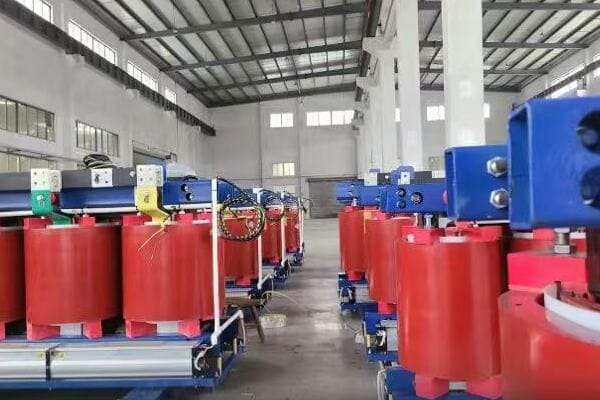
Key Standards and Compliance Requirements
Let’s explore the main standards and their importance:
- IEC Standards
- GB Standards (Chinese National Standards)
- ANSI/IEEE Standards
- Comparison of Standards
- Importance of Certification
IEC Standards
International Electrotechnical Commission standards are widely recognized:
- IEC 60076: General requirements for power transformers
- IEC 60076-11: Specific to dry-type transformers
- IEC 60085: Electrical insulation – Thermal evaluation and designation
I recently worked on a project where strict adherence to IEC 60076-11 was crucial for winning a major contract in the Middle East.
GB Standards (Chinese National Standards)
Chinese manufacturers often adhere to GB standards:
- GB 1094.11: Aligns closely with IEC 60076-11
- GB/T 10228: Dry-type power transformers
During a factory audit in China, I observed how manufacturers ensure compliance with both GB and IEC standards, facilitating global exports.
ANSI/IEEE Standards
Important for North American markets:
- IEEE C57.12.01: General requirements for dry-type transformers
- IEEE C57.12.91: Test code for dry-type distribution and power transformers
Here’s a quick comparison of key standards:
| Standard | Focus Area | Equivalent International Standard |
|---|---|---|
| IEC 60076-11 | Dry-type transformers | Widely recognized globally |
| GB 1094.11 | Dry-type transformers (China) | Aligns with IEC 60076-11 |
| IEEE C57.12.01 | Dry-type transformers (North America) | – |
| IEC 60085 | Insulation classification | Used globally |
Comparison of Standards
Key differences and similarities:
- IEC and GB standards are closely aligned, facilitating global trade
- ANSI/IEEE standards may have different testing procedures or ratings
- Insulation classes are generally consistent across standards
Importance of Certification
Certification ensures:
- Compliance with safety and performance requirements
- Global market access and acceptance
- Quality assurance and reliability
Key points about standards compliance:
- IEC standards are widely recognized and often required globally
- GB standards ensure compliance with Chinese national requirements
- ANSI/IEEE standards are crucial for North American markets
- Compliance ensures safety, performance, and global compatibility
- Certification from recognized bodies is essential for market acceptance
In my experience, ensuring compliance with relevant standards is crucial for project success. I’ve seen cases where non-compliance led to significant delays and additional costs in international projects.
For example, in a recent project for a multinational corporation, we specifically sought manufacturers who could demonstrate compliance with both IEC and IEEE standards. This dual compliance was essential for the client’s global standardization efforts and simplified their approval process across different regions.
As we move on to discuss how to choose the right 11kV dry type transformer for your project, keep in mind the importance of these standards. A manufacturer’s ability to meet and exceed these standards often indicates their overall quality and reliability, which should be a key factor in your decision-making process.
How to Choose the Right 11kV Dry Type Transformer for Your Project?
Are you feeling overwhelmed by the process of selecting the perfect 11kV dry type transformer for your project? With so many factors to consider, making the right choice can seem daunting. But what if you had a clear, step-by-step approach to ensure you select the ideal transformer that meets all your project’s needs?
Choosing the right 11kV dry type transformer involves assessing load characteristics, environmental conditions, and compliance requirements. Key factors include capacity rating, insulation class, cooling method, and efficiency. Consider future load growth, installation space, and maintenance capabilities. Evaluate manufacturers based on their expertise in your specific application area and their ability to provide customization and after-sales support.
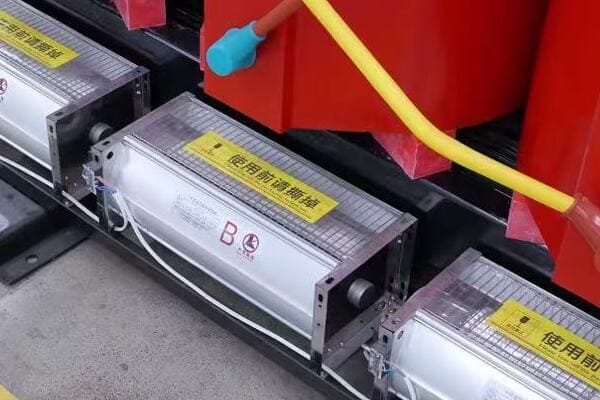
Key Steps in Selecting the Right Transformer
Let’s break down the selection process:
- Assess Project Requirements
- Evaluate Technical Specifications
- Consider Environmental Factors
- Analyze Manufacturer Capabilities
- Weigh Cost and Long-Term Value
Assess Project Requirements
Start by clearly defining your needs:
- Load characteristics and capacity requirements
- Voltage levels and regulation needs
- Future expansion plans and potential load growth
- Specific industry or application requirements
I recently worked on a project where underestimating future load growth led to selecting an undersized transformer. Always factor in potential expansion in your initial assessment.
Evaluate Technical Specifications
Key technical aspects to consider:
- Capacity rating (kVA)
- Insulation class (F, H, etc.)
- Cooling method (AN, AF, or hybrid)
- Efficiency ratings and losses
- Short-circuit impedance
During a recent industrial project, the choice of insulation class H proved crucial in handling occasional overloads without compromising the transformer’s lifespan.
Consider Environmental Factors
Assess the operating environment:
- Ambient temperature and humidity levels
- Altitude of the installation site
- Presence of dust, chemicals, or other contaminants
- Indoor vs outdoor installation
Here’s a quick guide to environmental considerations:
| Factor | Impact on Selection | Mitigation Measure |
|---|---|---|
| High Temperature | Affects cooling efficiency | Choose higher insulation class |
| High Humidity | Risk of insulation degradation | Select appropriate enclosure type |
| High Altitude | Reduced cooling efficiency | Adjust ratings or cooling design |
| Dusty Environment | Potential for reduced cooling | Consider sealed or protected designs |
Analyze Manufacturer Capabilities
Evaluate potential suppliers:
- Experience in your specific industry or application
- Customization abilities and flexibility in design
- Quality certifications and compliance with relevant standards
- After-sales support and warranty terms
I recall a project where choosing a manufacturer with strong local support proved invaluable when we needed urgent assistance during commissioning.
Weigh Cost and Long-Term Value
Consider the total cost of ownership:
- Initial purchase price
- Installation and transportation costs
- Operational efficiency and energy savings over time
- Maintenance requirements and expected lifespan
Key considerations for choosing the right transformer:
- Accurately assess current and future project needs
- Carefully evaluate technical specifications against your requirements
- Consider the specific environmental conditions of your installation site
- Thoroughly research manufacturer capabilities and support
- Look beyond initial cost to total lifetime value
In my experience, successful transformer selection often comes down to balancing immediate needs with long-term considerations. I’ve seen cases where paying a premium for a more efficient or flexible transformer led to significant savings and improved performance over the life of the project.
For example, in a recent renewable energy project, we chose a transformer with a higher insulation class and more advanced cooling system, despite its higher initial cost. This decision proved wise as it easily accommodated the variable output from solar panels and resulted in lower operational costs and higher reliability.
Remember, the right 11kV dry type transformer can significantly impact your project’s success, efficiency, and long-term operational costs. Take the time to thoroughly evaluate your options and don’t hesitate to seek expert advice when needed.
Conclusion
Selecting the right 11kV dry type transformer requires a comprehensive understanding of voltage classes, insulation types, cooling methods, and compliance standards. By carefully considering these factors alongside your specific project requirements, environmental conditions, and long-term operational needs, you can make an informed decision that ensures optimal performance, efficiency, and reliability for your power distribution system.
Remember, at chbeb-ele, we’re not just sharing information – we’re empowering you to be part of the solution in creating a secure, clean, and efficient energy future. Let’s continue this journey together.
Recent Post
Quick Message
Request A free quote
We'd like to work with you
- +86 15558785111
- chbebgroup@chbebpower.com
- +86 15558785111
What We Do
CHINA BEI ER BIAN (CHBEB) GROUP, with 218 million in registered capital, originated from Beijing Beierbian Transformer Group. Headquartered in Beijing for R&D, it operates major production bases in Nanjing and Yueqing, producing high-quality products.
Latest Post
Latest Product
Contact Us
- +86 15558785111
- chbebgroup@chbebpower.com
- +86 15558785111
BeiJing
No 3,RongJing East Road,BeiJing Economic Technological Development Area,BeiJing,China
JiangSu
No 7️Xiangfeng Road,Jiangning,NanJing,JiangSu,China
WenZhou
No.211, Wei 16 Road, Industrial Zone, Yueqing, Wenzhou, Zhejiang, China.
XiangYang Industrial Zone ,YueQing,WenZhou,ZheJiang,China

